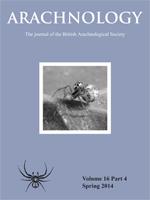We investigated the predation rates of three common jumping spiders (Salticidae) on mosquitoes (Culicidae) in Southeast Asia. We released mosquitoes from the genus Armigeres in a terrarium together with single predatory spiders for a period of approximately 24 hours. Predation rates differed among spider species and among sexes: mean predation rates (± SE) for Plexippus petersi were 6.0 (±0.8) mosquitoes per day for male spiders and 9.2 (±0.85) for female spiders. Male spiders of the species Plexippus paykulli consumed 4.3 (±1.2) mosquitoes per day and female spiders fed on 10.8 (±1.6) mosquitoes per day. For Menemerus bivittatus the predation rates were 2.7 (±1.3) and 4.7 (±2.3) mosquitoes per day for male and female spiders respectively. For all species, female spiders fed on significantly more mosquitoes than male spiders. Mosquito density positively affected predation rates, but this effect was small. The observed predation rates are high relative to estimates for other mosquito predators, leading to the conclusion that salticids, particularly Plexippus spp, have the potential to be valuable biological control agents for mosquitoes.
How to translate text using browser tools
1 March 2014
Predation on Mosquitoes by Common Southeast Asian House-Dwelling Jumping Spiders (Salticidae)
Robbie Weterings,
Chanin Umponstira,
Hannah L. Buckley
ACCESS THE FULL ARTICLE





